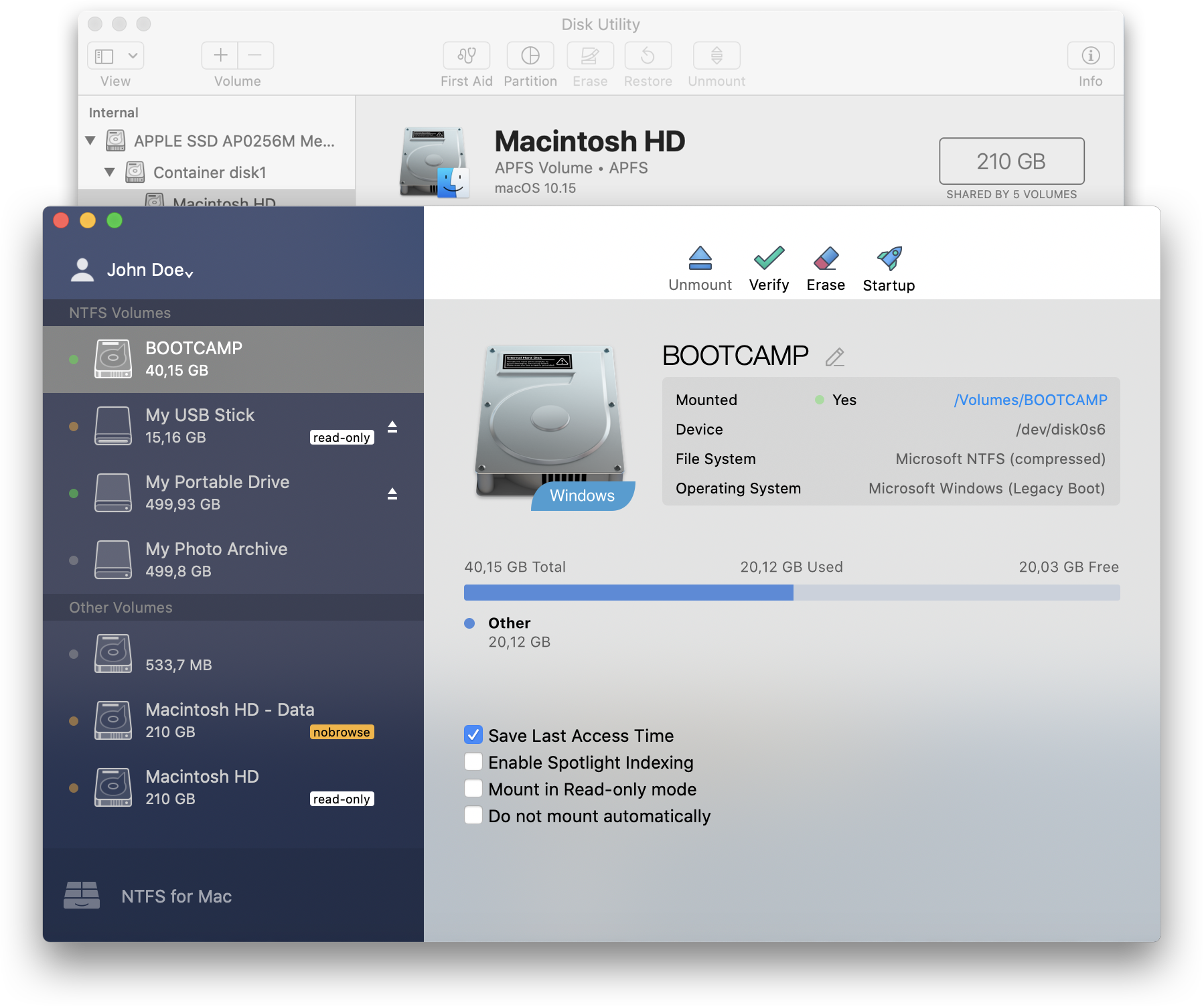

These aren’t the same 1 kilobyte 1000 bytes (or 1024 bytes depending on context). Each volume within an APFS container can have its own APFS format-APFS, APFS (Encrypted), APFS (Case-sensitive), or APFS (Case-sensitive, Encrypted). First, a lot of people confuse the default NTFS file size of 4096 bytes with the exFAT option of 4096 kilobytes. You can easily add or delete volumes in APFS containers. I recently brought Western Digitals Passport Essential, and will be using with my. For example, folders named “Homework” and “HOMEWORK” are two different folders.
EXFAT OR NTFS FOR MAC MAC OS
To be able to copy data from your Mac OS to the SSD, it needs to be formatted using. For example, if it is formatted using NTFS, it would work well on a Windows computer, but on Macs, there will be limited compatibility with it, you only will be able to copy the contents on the SSD to the computer, but not vice versa. For example, folders named “Homework” and “HOMEWORK” are two different folders.ĪPFS (Case-sensitive, Encrypted): Uses the APFS format, is case-sensitive to file and folder names, and encrypts the volume. Tricky, because of the different types of formats an SSD can be formatted. Since NTFS is the default file system for bootable USB Windows 10, switching to FAT32 or FATex could be seen as a step back. However, Microsoft optimized NTFS and established it as the default file system for every operating system after Windows XP. Choose this option if you don’t need an encrypted or case-sensitive format.ĪPFS (Encrypted): Uses the APFS format and encrypts the volume.ĪPFS (Case-sensitive): Uses the APFS format and is case-sensitive to file and folder names. NTFS is Windows’ default file system, but that doesn’t mean you can’t use FAT32 or exFAT.
EXFAT OR NTFS FOR MAC FOR MAC
Each volume uses only part of the overall container, so the available space is the total size of the container, minus the size of all the volumes in the container.Ĭhoose one of the following APFS formats for Mac computers using macOS 10.13 or later.ĪPFS: Uses the APFS format. If desired, you can specify reserve and quota sizes for each volume. With NTFS-3G or another NTFS driver installed, virtually every Mac. However, virtually every Windows PC in use can read and write NTFS. When a single APFS container has multiple volumes, the container’s free space is shared and is automatically allocated to any of the individual volumes as needed. Most manufacturers use FAT32 for cross-platform compatibility. macOS 10.13 or later supports APFS for both bootable and data volumes.ĪPFS allocates disk space within a container (partition) on demand. While APFS is optimized for the Flash/SSD storage used in recent Mac computers, it can also be used with older systems with traditional hard disk drives (HDD) and external, direct-attached storage. Apple File System (APFS), the default file system for Mac computers using macOS 10.13 or later, features strong encryption, space sharing, snapshots, fast directory sizing, and improved file system fundamentals.


 0 kommentar(er)
0 kommentar(er)
